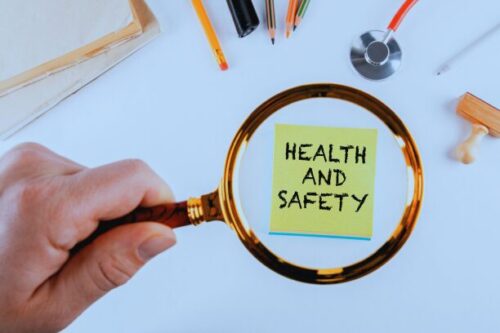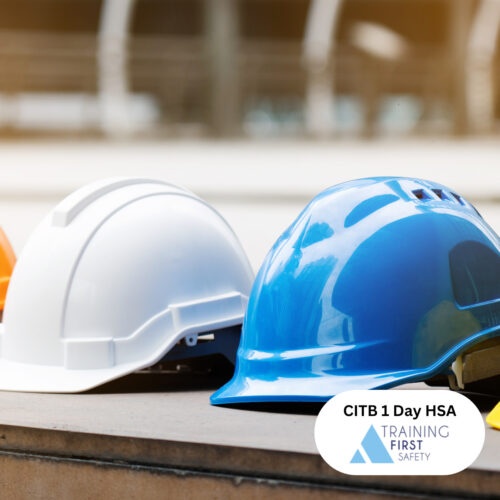- What is mental health?
- Mental Health Continuum
- Factors which affect mental health
- Stigma
- Stress and stress management
- Spotting signs of distress
- Mental health conditions:
- Depression
- Anxiety disorders
- Psychosis
- Eating disorders
- Suicide
- Self-harm
- Recovery
- Take 10 Together – starting a supportive conversation
- Supporting mental health in the workplace
- Useful statistics
- Helpful resources
-
 Course Overview Are you aware of how to recognise red flags? Mental Health Aware course will give you a great awareness and insight into Mental Health. WHAT WILL YOU LEARN
Course Overview Are you aware of how to recognise red flags? Mental Health Aware course will give you a great awareness and insight into Mental Health. WHAT WILL YOU LEARN -
 Course Overview Are you aware of how to recognise red flags? Mental Health Aware course will give you a great awareness and insight into Mental Health. WHAT WILL YOU LEARN
Course Overview Are you aware of how to recognise red flags? Mental Health Aware course will give you a great awareness and insight into Mental Health. WHAT WILL YOU LEARN- What is mental health?
- Mental Health Continuum
- Factors which affect mental health
- Stigma
- Stress and stress management
- Spotting signs of distress
- Mental health conditions:
- Depression
- Anxiety disorders
- Psychosis
- Eating disorders
- Suicide
- Self-harm
- Recovery
- Take 10 Together – starting a supportive conversation
- Supporting mental health in the workplace
- Useful statistics
- Helpful resources
-
 Course Overview Are you aware of how to recognise red flags? Mental Health Aware course will give you a great awareness and insight into Mental Health. WHAT WILL YOU LEARN
Course Overview Are you aware of how to recognise red flags? Mental Health Aware course will give you a great awareness and insight into Mental Health. WHAT WILL YOU LEARN- What is mental health?
- Mental Health Continuum
- Factors which affect mental health
- Stigma
- Stress and stress management
- Spotting signs of distress
- Mental health conditions:
- Depression
- Anxiety disorders
- Psychosis
- Eating disorders
- Suicide
- Self-harm
- Recovery
- Take 10 Together – starting a supportive conversation
- Supporting mental health in the workplace
- Useful statistics
- Helpful resources
-

What is Mental Health First Aid Refresher?
This one-day course is for those who have previously completed the Mental Health First Aid course. The course refreshes the knowledge gained on the two-day course, updates learners on any changes in legislation and best practise and is recommended to complete 3 years after the initial training.- Spotting the early signs and symptoms of mental ill health
- Starting a supportive conversation with a colleague who may be experiencing a mental health issue or emotional distress
- Listening to the person non-judgmentally
- Assessing the risk of suicide or self-harm
- Encouraging the person to access appropriate professional support or self-help
- Escalation to the appropriate emergency services when necessary
- Maintaining confidentiality as appropriate
- Completing critical incident documents
- Protecting yourself whilst performing the role
-

What is Mental Health First Aid?
The skills and knowledge developed on this course include:- An understanding of mental health and the factors that affect mental wellbeing
- Practical skills t0 notice triggers and signs of ill mental health
- Confidence to intervene, listen and support and individual in need
- Knowledge of helpful resources to guide recovery
- Learn valuable interpersonal skills such as non judgemental listening
- Understand how to build a wellbeing action plan to support employees in their organisation
-

What is Mental Health First Aid?
The skills and knowledge developed on this course include:- An understanding of mental health and the factors that affect mental wellbeing
- Practical skills t0 notice triggers and signs of ill mental health
- Confidence to intervene, listen and support and individual in need
- Knowledge of helpful resources to guide recovery
- Learn valuable interpersonal skills such as non judgemental listening
- Understand how to build a wellbeing action plan to support employees in their organisation
-

NPORS- Health and Safety Awareness
Overview This course highlights potential hazards when working on site and provides practical advice on keeping yourself and your colleagues safe. It covers your individual and employer’s responsibilities, including what you can do if you think anyone’s health and safety is being put at risk. At the end of the course you will have an understanding of:- the need to prevent accidents
- health and safety law
- how your role fits into the control and management of the site risk assessments and method statements
- performing safely and asking for advice
- how to report unsafe acts to prevent an accident
-

NPORS- Health and Safety Awareness
Overview This course highlights potential hazards when working on site and provides practical advice on keeping yourself and your colleagues safe. It covers your individual and employer’s responsibilities, including what you can do if you think anyone’s health and safety is being put at risk. At the end of the course you will have an understanding of:- the need to prevent accidents
- health and safety law
- how your role fits into the control and management of the site risk assessments and method statements
- performing safely and asking for advice
- how to report unsafe acts to prevent an accident
-
 This practical course aims to ensure that all buyers and users of Man-Safe as well as safety harness & lanyards understand which kit, they should be using to offer full protection, and how to properly inspect kit.
This practical course aims to ensure that all buyers and users of Man-Safe as well as safety harness & lanyards understand which kit, they should be using to offer full protection, and how to properly inspect kit.Course objectives/outcomes:
This course covers using a Safety Harness and Lanyard with Man-Safe system while working at height, we recommend delegates are trained in working at height which is separate course and covers all aspects of working at height. This practical course is not only essential for users of mansafe, fall arrest and/or restraint equipment, but is also aimed at their supervisors and managers, business owners and buyers of PPE equipment.- Health & Safety Laws & Regulations – understanding your legal duty including
- Work at Height Regulations 2005
- Responsibilities of the employer and employee
- Different types of harnesses and lanyards and their practical applications
- How to put on, fit, wear, work in and store the different types of harnesses
- Importance of regular safety harness and lanyard inspections – who is responsible and how often they must be done with examples
- Importance of issuing and using the correct Safety Harness and Lanyards and PPE and how to inspect it
- How to collate a safe rescue plan to reduce the time an operative is suspended in a harness
- Operative suspension trauma
- Delegate practical session with adjustment and fitting of harnesses and lanyards
- Man-Safe system – Inspection, testing, end user equipment
- Different types of Man-Safe system systems including roof, wall and ladder systems
- Practical demonstration of a Man-Safe system with trans fastener harness and lanyard
- Test paper/questions/ handouts & review
-
 This practical course aims to ensure that all buyers and users of Man-Safe as well as safety harness & lanyards understand which kit, they should be using to offer full protection, and how to properly inspect kit.
This practical course aims to ensure that all buyers and users of Man-Safe as well as safety harness & lanyards understand which kit, they should be using to offer full protection, and how to properly inspect kit.Course objectives/outcomes:
This course covers using a Safety Harness and Lanyard with Man-Safe system while working at height, we recommend delegates are trained in working at height which is separate course and covers all aspects of working at height. This practical course is not only essential for users of mansafe, fall arrest and/or restraint equipment, but is also aimed at their supervisors and managers, business owners and buyers of PPE equipment.- Health & Safety Laws & Regulations – understanding your legal duty including
- Work at Height Regulations 2005
- Responsibilities of the employer and employee
- Different types of harnesses and lanyards and their practical applications
- How to put on, fit, wear, work in and store the different types of harnesses
- Importance of regular safety harness and lanyard inspections – who is responsible and how often they must be done with examples
- Importance of issuing and using the correct Safety Harness and Lanyards and PPE and how to inspect it
- How to collate a safe rescue plan to reduce the time an operative is suspended in a harness
- Operative suspension trauma
- Delegate practical session with adjustment and fitting of harnesses and lanyards
- Man-Safe system – Inspection, testing, end user equipment
- Different types of Man-Safe system systems including roof, wall and ladder systems
- Practical demonstration of a Man-Safe system with trans fastener harness and lanyard
- Test paper/questions/ handouts & review
-
 This practical course aims to ensure that all buyers and users of Man-Safe as well as safety harness & lanyards understand which kit, they should be using to offer full protection, and how to properly inspect kit.
This practical course aims to ensure that all buyers and users of Man-Safe as well as safety harness & lanyards understand which kit, they should be using to offer full protection, and how to properly inspect kit.Course objectives/outcomes:
This course covers using a Safety Harness and Lanyard with Man-Safe system while working at height, we recommend delegates are trained in working at height which is separate course and covers all aspects of working at height. This practical course is not only essential for users of mansafe, fall arrest and/or restraint equipment, but is also aimed at their supervisors and managers, business owners and buyers of PPE equipment.- Health & Safety Laws & Regulations – understanding your legal duty including
- Work at Height Regulations 2005
- Responsibilities of the employer and employee
- Different types of harnesses and lanyards and their practical applications
- How to put on, fit, wear, work in and store the different types of harnesses
- Importance of regular safety harness and lanyard inspections – who is responsible and how often they must be done with examples
- Importance of issuing and using the correct Safety Harness and Lanyards and PPE and how to inspect it
- How to collate a safe rescue plan to reduce the time an operative is suspended in a harness
- Operative suspension trauma
- Delegate practical session with adjustment and fitting of harnesses and lanyards
- Man-Safe system – Inspection, testing, end user equipment
- Different types of Man-Safe system systems including roof, wall and ladder systems
- Practical demonstration of a Man-Safe system with trans fastener harness and lanyard
- Test paper/questions/ handouts & review
-
 This practical course aims to ensure that all buyers and users of Man-Safe as well as safety harness & lanyards understand which kit, they should be using to offer full protection, and how to properly inspect kit.
This practical course aims to ensure that all buyers and users of Man-Safe as well as safety harness & lanyards understand which kit, they should be using to offer full protection, and how to properly inspect kit.Course objectives/outcomes:
This course covers using a Safety Harness and Lanyard with Man-Safe system while working at height, we recommend delegates are trained in working at height which is separate course and covers all aspects of working at height. This practical course is not only essential for users of mansafe, fall arrest and/or restraint equipment, but is also aimed at their supervisors and managers, business owners and buyers of PPE equipment.- Health & Safety Laws & Regulations – understanding your legal duty including
- Work at Height Regulations 2005
- Responsibilities of the employer and employee
- Different types of harnesses and lanyards and their practical applications
- How to put on, fit, wear, work in and store the different types of harnesses
- Importance of regular safety harness and lanyard inspections – who is responsible and how often they must be done with examples
- Importance of issuing and using the correct Safety Harness and Lanyards and PPE and how to inspect it
- How to collate a safe rescue plan to reduce the time an operative is suspended in a harness
- Operative suspension trauma
- Delegate practical session with adjustment and fitting of harnesses and lanyards
- Man-Safe system – Inspection, testing, end user equipment
- Different types of Man-Safe system systems including roof, wall and ladder systems
- Practical demonstration of a Man-Safe system with trans fastener harness and lanyard
- Test paper/questions/ handouts & review
